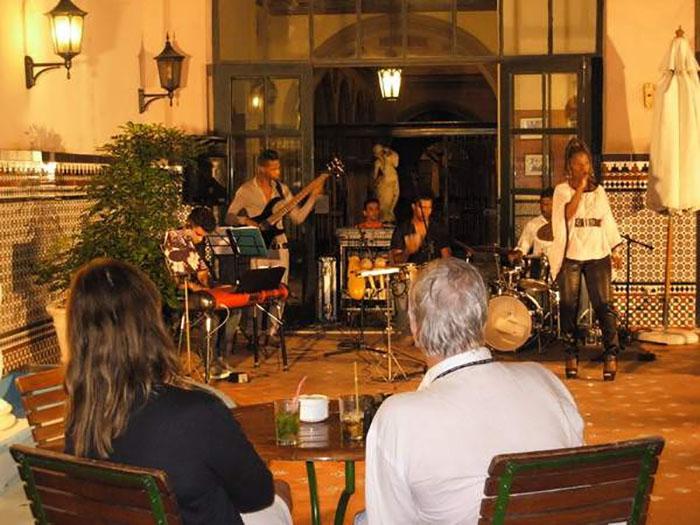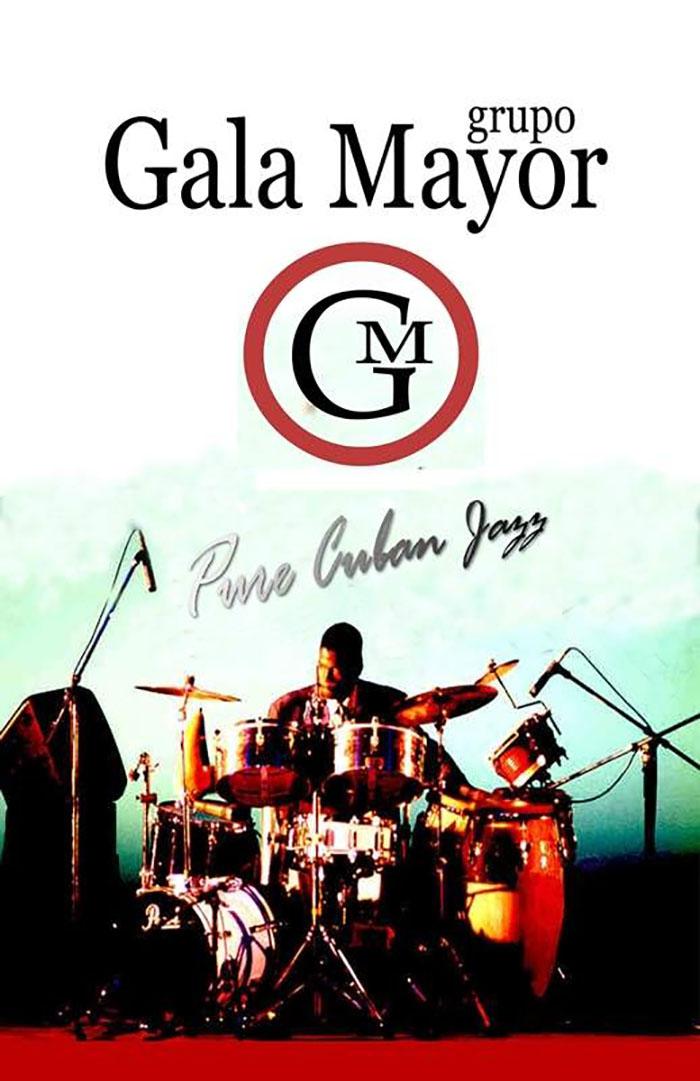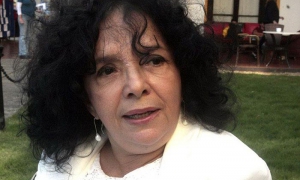
More has an impressive jazz tradition, currently being enriched by an avalanche of excellent young musicians, who are broadening the interpretation of this genre, characteristically open and flexible.
Experts and lovers of this artistic expression do not hesitate to describe Cuban jazz today as potent, both in terms of numbers and the quality of musicians involved.
To this positive evaluation another element must be added. These young jazzistas have a rigorous, comprehensive academic preparation, thanks to the existence of highly respected art schools in the country. Jazz per se is not studied in conservatories, but students develop all the musical tools they need, and the command of instruments, to approach it.

Young performers have also experienced the International jazz Plaza Festival since 1980, in which world-renowned figures like Dizzy Gillespie and Wynton Marsalis have participated, plus the Jojazz competition since 1998, dedicated to performers and composers under 30 years of age.
Clearly it’s a good time for Cuban jazz, the most freeform of all musical genres. Following the path of Havana’s jazz scene eventually leads to the elegant Sevilla Hotel, where Gala Mayor creates a sort of musical bazaar, looking to accentuate what makes there creations different.
The group is led by percussionist Alejandro Mayor (La Habana, 1977) a graduate of Cuba’s Advanced Institute of Art, who told this publication, during an interview, that his philosophy is to take on all challenges.
Gala Mayor, created in 2003, has done everything from performing as a trio to accompanying acts during the 2009 International Circus Festival as a big band. Alejandro explains, “We did the arrangements for all the circus acts and had to improvise a great deal.”
Today, the traditional minimal nucleus of three musicians (piano, bass and percussion) plus a singer, is maintained, which no doubt speaks of the group’s versatility, of the opportunities they have at the interpretive level, and the skill with which they move between different genres and styles.
That is surely why they consider themselves “a group of jazz musicians, which takes a very open, flexible approach to the music.” To exemplify this flexibility,
Alejandro Mayor describes the group’s broad repertory in four categories, which are, he said, well-balanced.
The first is, naturally, that of jazz.
“We have an extensive laboratory of tracks from which we pick and choose, with almost all the genres within Cuban music. For example, we mix nengón, one of the varieties of changui, with guaguancó, as for the formal, a blues bass line. It’s called “Tumbao nengón,” which is one of the latest tracks we recorded.
“We have tried out every rhythm there is in popular Yoruba music, from the son complex. Always with a jazz influence, and we are very clear about what we are doing in a formal sense, with the harmonies, with the structures, the formats," he explains.
Among some of the jazz pieces they present at the Sevilla, on Old Havana's Prado, are "En apuros" and "Oshun" (Alejandro Mayor); "Claudia" (Chucho Valdés); "They can’t take that away from me" and "Summertime" (George & Ira Gershwin); "So what" ( Herbie Hankook) and "When I fall in love" (Edward Heyman & Victor Young).
Gala Mayor also has a popular dance music repertory, "based on our command of the basic elements of Cuban music's diverse genres," including songs such as "El Diablo Tun Tun," by Bienvenido Julián Gutiérrez; "La Guarapachanga," by Félix Chapotín; "Que viene hablando La Habana," by Alejandro Mayor; and "Son al son," by Cesar Portillo de la Luz.
The group performs a variety of songs, boleros, and ballads, as well, since “I had the good fortune of working directly with César Portillo de la Luz, Marta Valdés and César Vergara. They gave me the music and supervised my arrangements in an effort to achieve an identity. This allows me to present an exquisite repertory of songs that took the music of feelin' to a classic jazz format, with a female voice, which has marked the history of our music," Alejandro commented.
Outstanding within this category are "Interludio," by César Portillo de la Luz; "Convergencias," by Bienvenido Julián Gutiérrez; "Palabras," by Martha Valdés; "Rabo de Nube," by Silvio Rodríguez; "Sina," by Djavan, and "Regálame esta noche," by Chelo Velásquez.
Alejandro explains that, for its fourth section, the group gave itself the pleasure of compiling a selection of funky, "which has always been in tune with Cuban music. It emerged as a response to rock and roll, a genre which came out of the blues. U.S. Blacks didn't identify rock and roll with dancing. Funky is an urban phenomenon that developed in response to the need for dance music."
This category, he continued, includes classics from the 1970s, 80s and 90s, by performers like Steve Wonder, Lionel Ritchie, Cool & the Gang and Michael Jackson.
You arrange and compose...
I very much appreciate the music of others and thought I could contribute. As I said, I started doing the arrangements for the group, and later added my compositions. I like to combine an interesting introduction, which is what must first capture the audience, and then the surprise factor. In the end, the arrangement in a new composition.
What about percussion?
We do a percussion set because it's diverse and open, combining many instruments, bongo, cymbals. You have to bring them together in a single sonority.
Why jazz?
This is where there is the most freedom, and it has a great power to communicate, and this is our main purpose: acheive communication.
This they demonstrated at the Sevilla Sunday show. Alejandro commented, "Our starting point was a jazz peña, but our discourse is plural. My group isn't always there. Every month we have a different guest. There are many groups in Cuba with good proposals and ideas."
Performers at the regular monthly show, in addition to Gala Mayor, have included Lázaro Valdés, Luz de Habana, Sule Guerra, Michel Herrera, Leyanis Valdés, Emilio Morales, Emilio Martín and Eduardo Sandoval.
Gala Mayor returns to the Sevilla this coming April, to celebrate the anniversary of the peña and International Jazz Day (the 30th).
Cuban jazz has reached a high level of quality, of inexhaustible richness in improvisation and variation. Young musicians are creating an excellent panorama, and Gala Mayor shines within this galaxy.






